In the desert landscape of Wadi Rum, when James and I were sitting in the communal space near our tent to wait for dinner, we spoke to a German man who with his wife and two daughters were also on holiday. We were talking about Lebanon, among other things, and the small country’s remarkable beauty.
“Someone also told me how amazing Lebanon is,” the German father said to us. “But we decided to choose Jordan because we feel it’s safer for small children.”
Aman is the Indonesian word for safe or secure, and that’s exactly what I felt throughout our stay in the kingdom. In Amman, I constantly felt aman; the car drivers were far less aggressive than those in Beirut, and despite the crowds and rather chaotic atmosphere of the Downtown area in east Amman where our hotel was located, I never experienced any sense of danger at all. Probably the most threatening thing Jordan faces is in fact the lack of water as it is among the world’s most water-scarce countries, a condition due to this land’s hot and mostly arid climate.
However, in spite of this seemingly hostile setting, Amman has been inhabited for millennia by different nations and conquered by a multitude of foreign powers. In the 13th century BC, the Ammonites – an ancient Semitic-speaking people who settled in the east of the Jordan River – established the capital of their kingdom in Rabbath Ammon which over time, including a period in history when the Assyrian Empire and subsequently the Persian Empire took control, became known simply as Ammon. When this land was occupied by the Hellenistic Ptolemaic Kingdom based in Alexandria, Ammon was renamed Philadelphia, after Ptolemy II Philadelphus, the pharaoh of the conquering kingdom.
The Greeks ruled this arid Levantine region for centuries until the advent of the Romans who would then control vast swathes of land from Europe to Africa and Asia. As Christianity rose to prominence, Philadelphia became part of the Byzantine Empire, before being taken over by the Rashidun Caliphate – the first Islamic caliphate – who changed the city’s name into Amman. Centuries later the Muslims experienced a setback when parts of the Levant fell under the control of the Crusaders, although in the 12th century Amman was recaptured by the Muslims (this time the Ayyubids). From the late 13th century, Amman and much of the Levant was under the rule of the Mamluks of Egypt until the 16th century when Egypt was conquered by the Ottomans of Turkey.
On the brink of World War I, which pitted the Central Powers (of which the Ottoman Empire was a part) against the Allied Powers (with the British Empire as one of its members), the British saw an opportunity to forge an alliance with the Arabs – who for long were suppressed under the Turks – to defeat the Ottomans. The Hashemites, a dynasty who ruled Mecca – the holiest city in the Islamic world – until its takeover by the Saudis in 1924, became a key ally for the British during the Arab Revolt which contributed to the weakening grip of the Ottomans in the Levant. Eventually, following the conclusion of World War I, the Ottomans relinquished control of much of their former territories, effectively giving way to European powers – chiefly Britain and France – to dominate the politics of a region that constitutes the modern states of Syria, Lebanon, Israel, Palestine, and Jordan (as well as Iraq and Kuwait further east, and Egypt further south).
During the British mandate period, the Emirate of Transjordan was established to the east of the Jordan River which enjoyed a greater degree of autonomy than the region to the river’s west. In 1946, the British finally granted independence to the emirate which then changed its official name into the Hashemite Kingdom of Transjordan, shortened to “Jordan” a few years later. On the other side of the river, the situation was far more complex. The British Mandate of Palestine was due to expire on May 14, 1948. This prompted the United Nations to adopt a resolution six months earlier which provided the blueprint for a partition of the mandate territory in two: a Jewish state and another one for the Palestinian Arabs. This sparked outrage in the Arab world, and six months later Israel declared its independence which was met with military intervention by a coalition of Arab forces the following day. The war ended 10 months later in March 1949, resulting in the Israeli occupation of almost 60% of the proposed area for the new Arab state, as well as the annexation of the Gaza strip by Egypt and the West Bank by Transjordan.
In the following decades, tensions between Israel and its neighbors (mainly Jordan, Egypt and Syria) remained high. Then, in 1967, another war between the two sides broke out, ending just six days later with a humiliation for the joint Arab forces: Israel managed to capture the Sinai peninsula from Egypt, the Golan heights from Syria, and the West Bank from Jordan. The latter forced around 300,000 Palestinians to seek refuge to the east of the Jordan River. However, it wasn’t only the civilians who fled to Jordan. The Palestinian Liberation Organization (PLO) and its fighters resettled in Jordan and established new bases in the kingdom from which they launched attacks on Israeli-occupied territories. At first, Jordan tolerated the Palestinians. However, as PLO’s strength grew, effectively making the PLO a state within a state, factions within the organization began to instigate the overthrow of the Hashemite dynasty.
The Jordanians eventually ran out of patience, and finally in September 1970, King Hussein of Jordan ordered the country’s army to drive the fedayeen (PLO fighters) out of the kingdom. Cities with a heavy PLO presence were targeted, including the capital Amman. A few months afterward, the fedayeen surrendered and left Jordan for Lebanon where many of them settled in the southern part of the latter which had traditionally been the home of the Shia Muslims. This created communal frictions which contributed to a chain of events that led to the outbreak of a deadly civil war that engulfed Lebanon from 1975 to 1990.
In the decades that followed, Jordan repositioned itself not as an instigator of war, but rather an oasis of peace and stability in a highly tumultuous region. During the Gulf War, many Palestinians who lived in Kuwait fled to Jordan and settled in cities across the country, including Amman. It was both an obvious and a sentimental choice as Jordan is a place that is closest to their ancestral land which also happens to provide a sense of safety for them. A place where they felt aman. Among these Palestinians were the parents of Rania Yasin who would later marry Prince Abdullah – the then crown prince of the Hashemite dynasty – to eventually become Queen Rania. More than a decade later, when civil war broke out in Syria, yet again Jordan became one of the primary destinations for Syrian refugees who fled home to find safety. To date, the terrorist bombings in 2005 are so far the only time in recent decades when Amman faced a dire security situation.
In early October 2019, James and I, two tourists from a city 8,600 kilometers away from Amman found ourselves wandering around the Jordanian capital’s bustling streets and sidewalks, alongside hundreds or even thousands of other foreign tourists who were captivated by beautiful photos and intriguing stories about this city and other places throughout the kingdom. Jordan is our second Middle Eastern country after Lebanon, and I couldn’t help but compare Amman with Beirut to see how similar or different things were in both places. Compared to the Lebanese capital, Amman’s terrain is more hilly, covered with endless low-rise buildings stretching out as far as the eye can see. Like Beirut, there are parts of Amman where modern skyscrapers ostentatiously rise from a sea of monotonous structures around it. However, unlike cosmopolitan Beirut, Amman feels more laid-back and provincial, as if it was actually a supersized small city.
In the end, I concluded that Amman has its own magic, in a way that can’t necessarily be compared with the more worldly charm of Beirut. The Jordanian capital boasts a sumptuous yet semi-casual dining venue (I believe only one of many) which serves traditional Jordanian as well as Palestinian cuisine in an elegant, period setting. But the amazing flavors of Jordanian dishes can also be found at much more modest establishments that made me realize how underrated this nation’s food really is (which requires a post on its own). The most bewildering, and probably the strangest, thing about Amman, however, is the fact that it has a split personality embodied by old, historic east Amman and its modern and greener western counterpart, separated from each other by an invisible line.
When night fell, the streets around our hotel became even livelier. Men, women, boys, girls, all seemed to enjoy an evening stroll when the oppressing daytime heat was replaced by comfortable, temperate dry air as the color of the sky slowly changed from magenta to dark purple before eventually turning into deep blue. On the sidewalk, small kiosks selling books were a refreshing sight in a time when online newspapers and e-books have been embraced by much of the world. Around dinner time, people on the street holding plates with big slices of knafeh (a traditional Middle Eastern dessert made with pastry or semolina dough, soaked in sweet syrup and layered with cheese with sprinkled pistachios on top) savored its rich, indulgent flavors while exchanging stories with their friends. The dessert’s layers are like the layers of history of Amman, which make it even more intriguing because they’re piled on top of each other, instead of being separate from one another. And the sugary syrup oozing from a slice of knafeh is like an allegory of Jordan’s position as an oasis in this volatile corner of the world, always ready to share its sweetness with those in need.




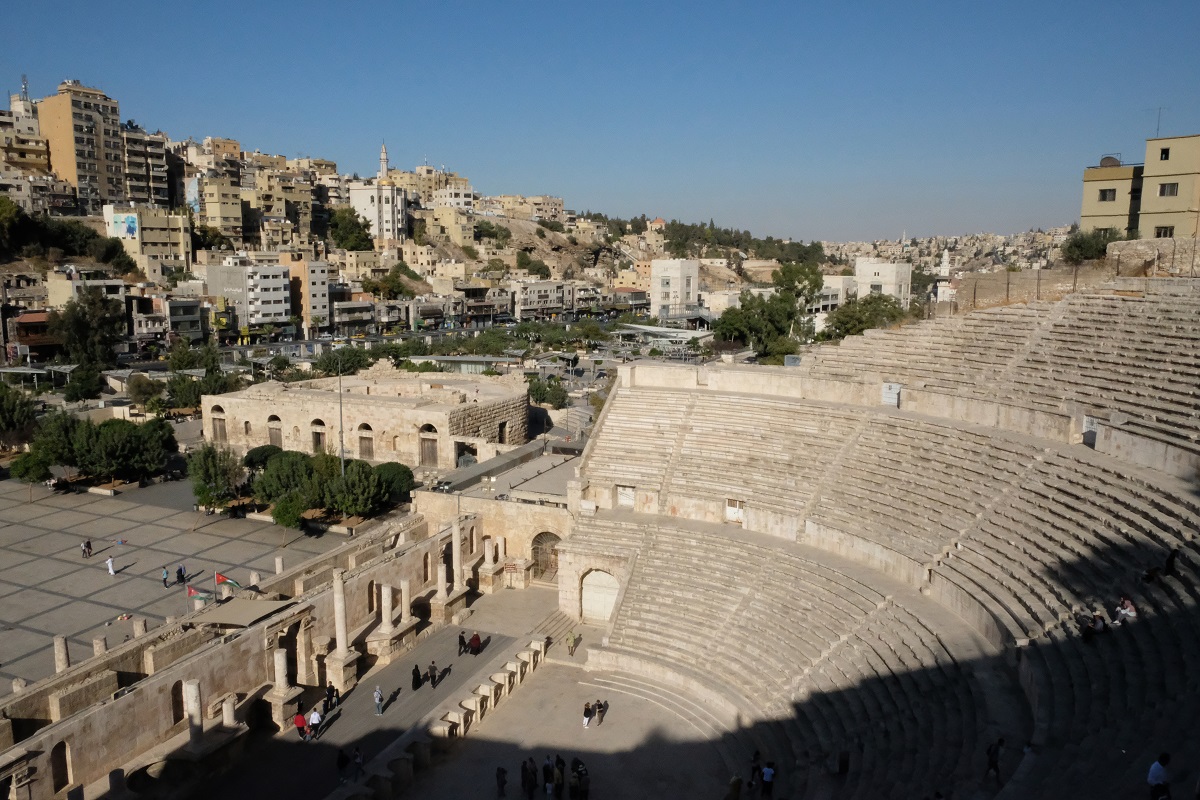



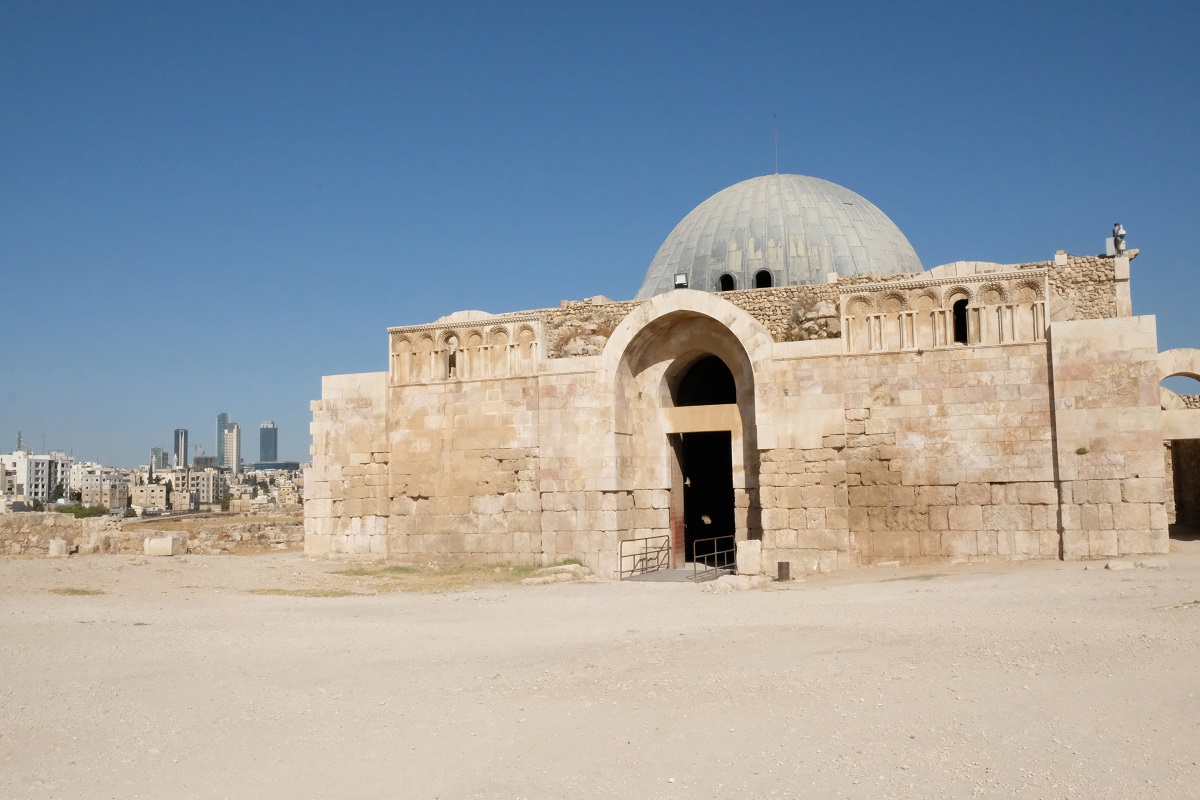
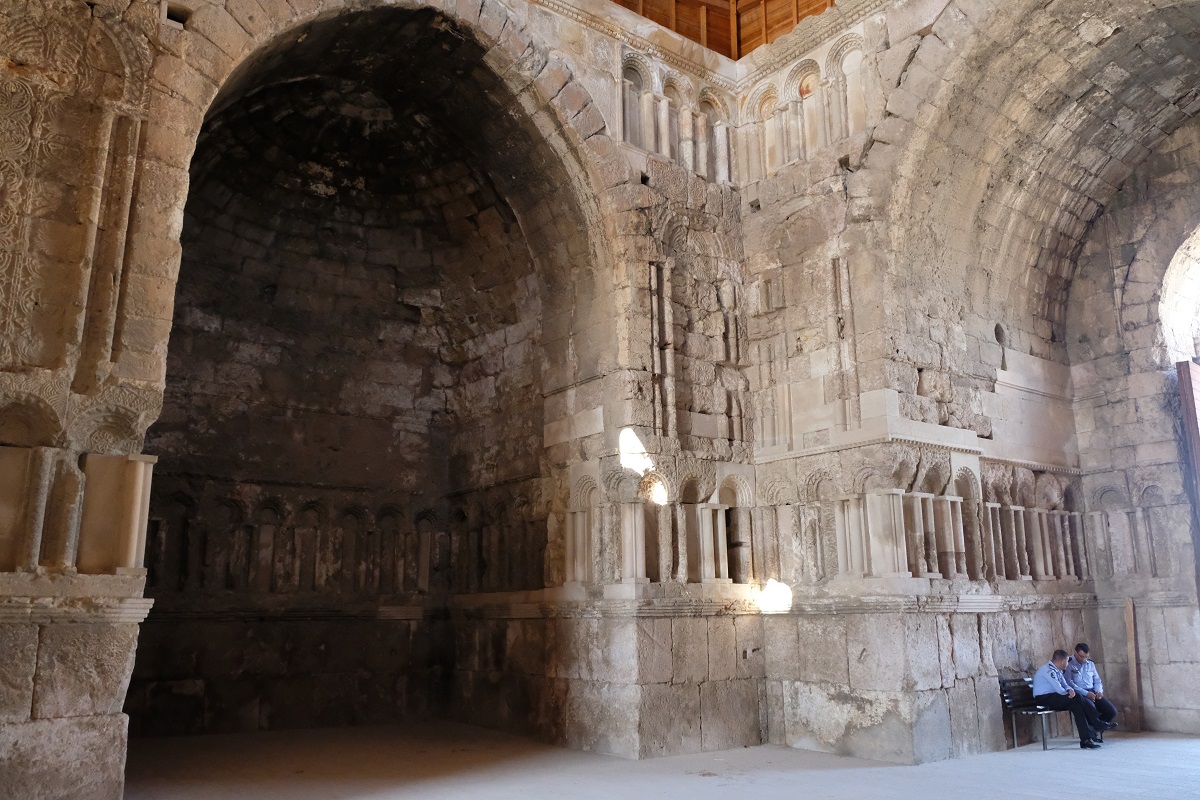






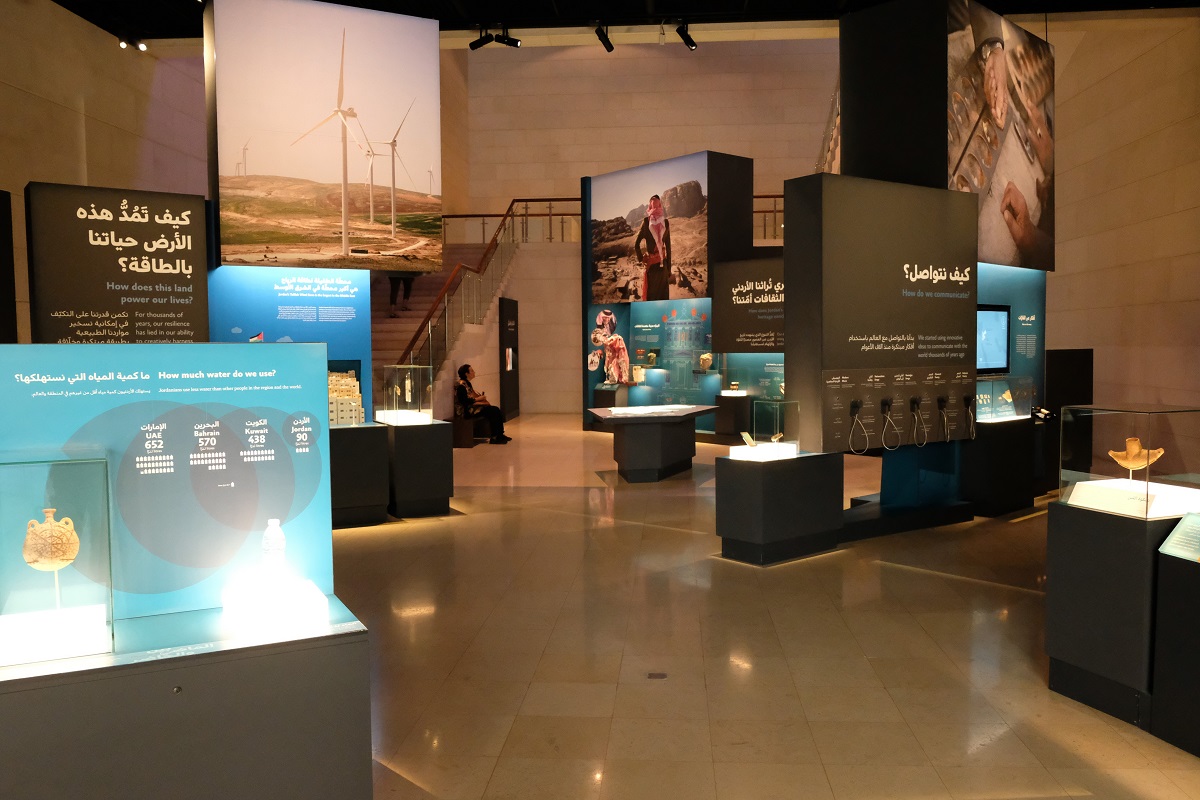
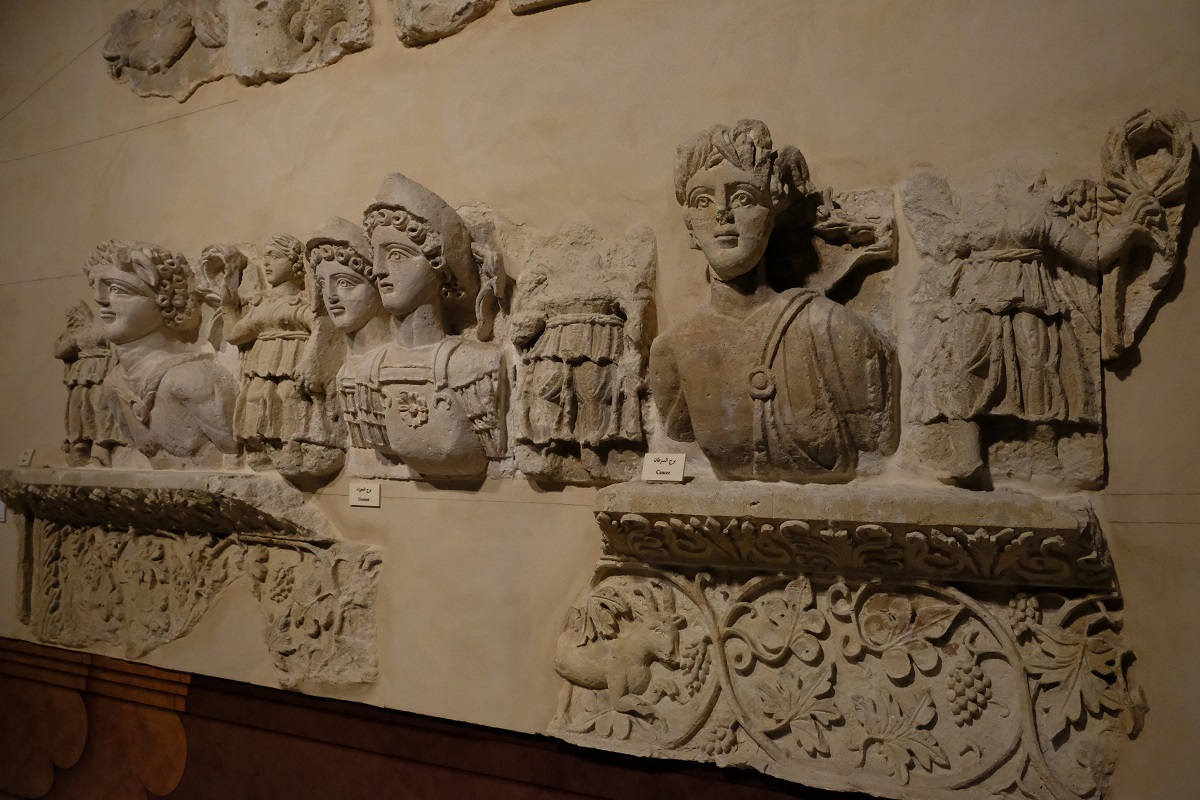







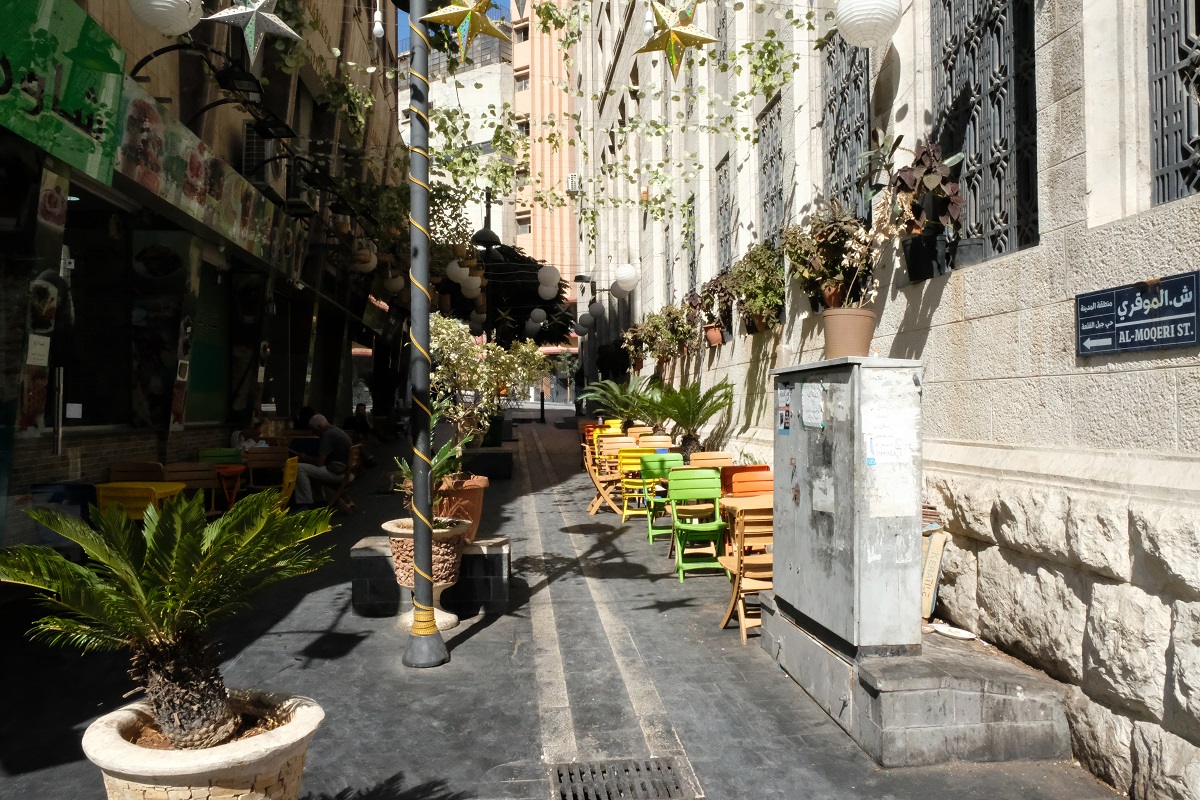
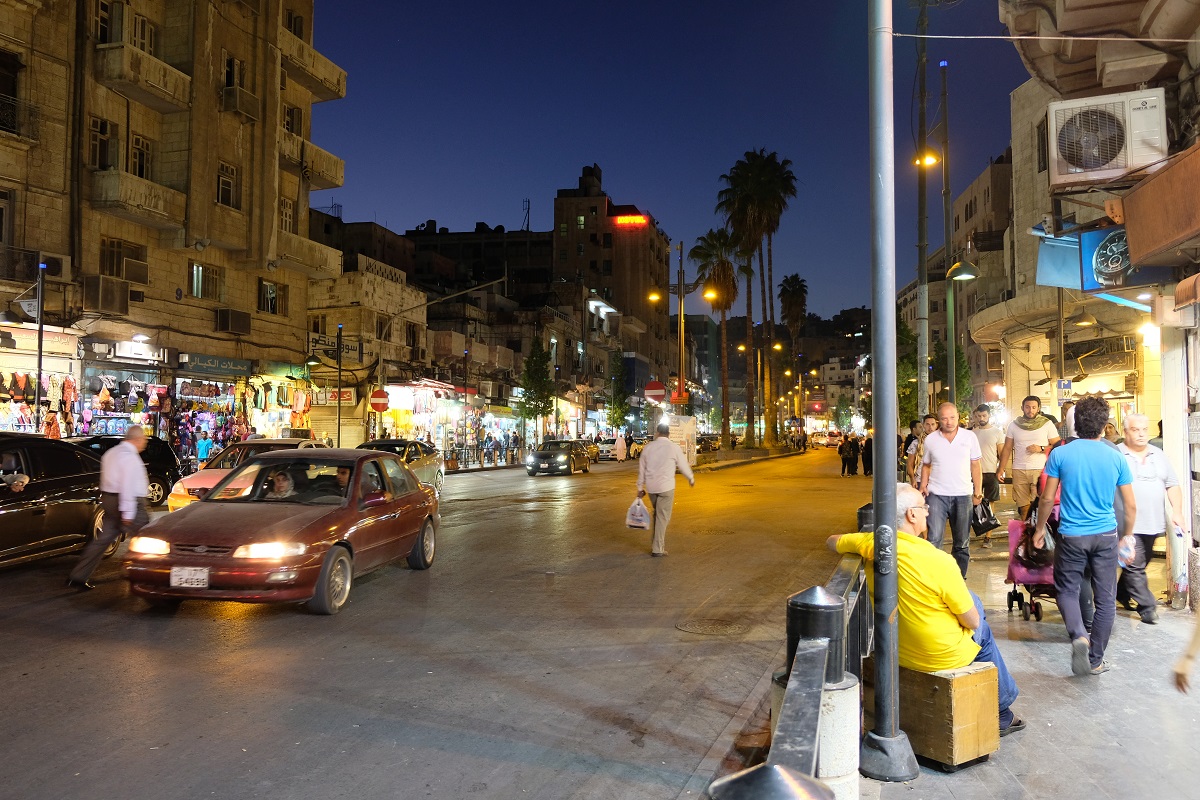


Fascinating and well-written as always! Such a concise summary of Middle East history too, thank you. It helped me to better understand today’s strife in the region. Your posts are so enjoyable and educational!
LikeLiked by 1 person
Thank you, Bill & Debbie. Writing this post and the one on Beirut was quite difficult because of the convoluted history of these places. I tried to include most of the important events that had shaped the politics of this region in this post, so we can put things into perspective and have a better understanding of why things are the way they are today, like what you said.
LikeLike
Great post. If your first post on Jordan hadn’t convinced me that this should be my next plan, this post would certainly have, The city looks beautiful. That photo of the book kiosk looks very gemuetlich (the English word friendly doesn’t quite capture the emotion, unfortunately).
LikeLiked by 2 people
I googled gemuetlich, and it seems to me that the word has a very similar meaning with hygge in Danish, and that was quite close with how I felt in Amman. Sometimes new cities can feel a bit intimidating. But I hardly ever felt that way when I was in the Jordanian capital.
LikeLiked by 1 person
Yes, hygge is similar. Is that close to aman?
LikeLiked by 1 person
Aman is quite different. It’s a feeling or state of not being threatened by anyone or anything.
LikeLike
Thanks
LikeLiked by 1 person
I read somewhere that there was a project to use Israeli tech and build a de-salination plant that could be used to restore the Dead sea to somewhere to its older levels and at the same time bring more water to Jordan… but with all the politics around it’s stuck in neverland. I wish politics remained politics and engineers and geeks were given free rein! Great post Bama, always an education.
LikeLiked by 1 person
I also read about that project. However, a few days ago I came across an article which mentioned about the cold relations between Jordan and Israel today. It sounds like the desalination plant will have to wait for things to improve between the two neighbors. Thanks Fabrizio!
LikeLiked by 1 person
Bama honestly it feels like I am just walking on the backs of your shoes. So recognizable are many of the images I can’t help but smile thinking I stood just two steps to the left. Like you we felt so safe in Jordan, perhaps it is one of the top places in the world for us in terms of feeling secure.
LikeLiked by 1 person
That was how I felt when I saw your videos on Twitter. When I was watching the one shot at the Roman theater, I couldn’t help but think that two or three days earlier I was standing exactly at the same spot where you took the video.
LikeLiked by 1 person
Funny how our paths almost crossed Bama. Hopefully just a bit closer another time.
LikeLiked by 1 person
Hopefully!
LikeLike
Looking forward to your post of the food
LikeLiked by 1 person
At this point I have so many ideas for that post. We’ll see how it goes.
LikeLiked by 1 person
We felt very safe in Jordan also, although we unfortunately didn’t make it to Amman. I never did look up the origin of the “Hashemite” part of Jordan’s name, so thanks for explaining that! I also enjoyed reading about the Hellenistic history here; so much of the Middle East and Mediterranean Europe and Northern Africa share ancient histories. (Sort of off-topic, but we are now considering Lebanon for a short trip soon, and much of that is based on your excitement about your trip!)
LikeLiked by 1 person
It’s my dream to visit all those countries surrounding the Mediterranean Sea because of their intertwined history — seeing Hellenic heritage outside Greece, Roman structures outside Italy, vestiges of the Phoenicians outside Lebanon, and traces of Ancient Egyptian culture beyond the borders of modern Egypt, to name some.
If you do plan a trip to Lebanon, I’d suggest you to check the news regularly. So far, the nationwide protests against the government seem to be largely peaceful. But I read that from time to time there has been road closures. When you arrive in the country, however, you won’t regret all the hassles. It’s really one of the most beautiful places I’ve ever been to.
LikeLiked by 1 person
Thanks so much for this impressive post giving not only a history of the area and your observations of current conditions but also these remarkable photos. I may be visiting this country in March 2020, so I’m especially appreciative of any and all information.
LikeLiked by 1 person
You’re very welcome, Bert and Rusha! Weather-wise, March should be pleasant, so I do hope you’ll get good photos when you’re there. I’ll be posting more posts on Jordan in the coming months — I hope they can provide additional information for you to plan your upcoming trip.
LikeLiked by 1 person
Other than Petra and Wadi Rum, I really don’t know much about the attractions in Jordan. Your description and photos of Amman are a lovely surprise. The rich historical sites in this city are amazing. The Roman amphitheatre looks massive and in fantastic condition. It’s also good to hear that you felt so aman there.
LikeLiked by 1 person
Petra is famous for a very good reason, and it was even more amazing in person. However, Amman is often overshadowed by Jordan’s ‘star’ attractions despite the fact that the city has quite a lot of things to offer. I would recommend anyone visiting Amman to stay in the city for at least three days to explore some of its most fascinating corners.
LikeLiked by 1 person
We enjoyed Amman. It’s an interesting city, and we found some wonderful places to eat. I still remember the humus and olives. I enjoyed reading more of the history – you delved much deeper into it than I did.
Alison
LikeLiked by 1 person
Actually it was your post which gave me an idea of what kind of city Amman is, so I knew what to expect when I planned this trip. However, I was still pleasantly surprised by how easy things were in the city — from crossing the street to finding good food.
LikeLiked by 1 person
You always show me a part of the world I would have never considered traveling to.
LikeLiked by 1 person
It’s always a pleasure to share the stories and photos from the places I’ve been to because too often our perception about the world is only based on what we see on TV or read on the Internet.
LikeLiked by 1 person
Bama, it always amazes me how fast and efficient you are when it comes to choosing/uploading photos and writing/publishing posts so soon after our trips. I’d seen photos of Amman Citadel from my aunt but had not anticipated just how huge and extensive it really was. And the Roman Theater too, it boggles the mind how something so old could be so well-preserved. Thank you for this concise summary of a very complicated history paired with some wonderful shots of archaeological sites and Amman’s vibrant street life.
LikeLiked by 1 person
Ten years ago I was a procrastinator, until I started working at that small bank which demanded me to be very fast, otherwise nothing would get done. But now, even long after I quit that job, the habit of doing things fast stays. 😀 I was also surprised by the immense size of the citadel, which actually made me thrilled because that meant there were more things to explore. If we had one extra day in Amman, I think I’d be interested in going to some places in the western side of the city. However, thinking of Amman makes me miss the food more than anything!
LikeLiked by 1 person
Love this post in so many ways! First of all it is so fun to read your impressions and I love the historical perspective. I am going to for sure link your post in my upcoming blog. Second, I went to a lot of the same places! We dined at Sufra too and it was so delightful. I thought Rainbow Street offered such a contrast between the old and new of the city. The souqs were pretty fascinating as well. I LOVED the Jordan museum. I wish I had more time to spend there as it was so informative. Did you eat at Hashems? I loved the food throughout my trip. it was excellent. Do you and James do it self-guided or did you go with a tour? I felt very safe there too but I think as a solo woman it would have been a different expereince. In all of the towns outside of Amman, I noticed no women were ever out at night. Never at the markets, the cafes etc. A group of four of us went to the supermarket and for that ten minute walk never saw a single woman out. It was very strange.
LikeLiked by 1 person
Thanks Nicole! In Amman we tried the food in Sufra, Hashem, Al Quds and Shahrazad, and we never had any dish that wasn’t delicious. Even the manakish we had at a roadside stall near our hotel was so good! Did you go to the Petra Museum as well? It’s truly world-class. I remember on our way to the Jordan Museum, we walked pass the Roman Nymphaeum, some interesting murals, and all kinds of small shops on both sides of the covered sidewalks. Actually James and I explored Amman on our own — the only time when we went with a tour group was in Wadi Rum. As for the women in Jordan, I did notice that the further away we were from Amman, in general the less women we saw on the streets. In Wadi Musa we did see some women going out at night with her children, though.
LikeLiked by 1 person
I loved all the food! For me, if I would have had another traveler with me I definitely could have done it without a guide. But the good thing was that I learned so incredibly much from him when he talked especially during our van rides. It is tough being a solo traveler at times, especially as a woman. I did go out one afternoon and found I had to cover my hair with my scarf, wear sunglasses and not look a man in the eye. It is a differenet experience that is for sure.
Unfortuantely we spent too much time in the Cave Bar at Petra so I missed the museum! I had walked that day for eight hours with only a short break to eat my pita sandwhich and I was too exhauasted. That was my one big regret not seeing the msueum.
LikeLiked by 1 person
When you had to cover your hair, was this in Amman or somewhere else?
I was completely unaware of the Cave Bar until you mentioned it. I just googled it and it looks quite cool! On our second in day in Petra we walked so much, including the hike to the Monastery and going to Petra by Night, by the end of the day I was barely able to walk. I had a really good sleep that night, though.
LikeLike
Wow, what an insight into Amman! I love love love this post. I enjoyed reading the history and your detailed description of the place and the vibe. I’m ashamed to say I didn’t know much about Amman before reading this, let alone putting it on my to-visit list, but now I seriously consider to go.
LikeLiked by 1 person
No need to feel ashamed, really. The world is a big place, and there’s always something new to learn about more than 200 countries that share this planet. Amman is not that far from where you live — at least compared to where I live. So, you really should go! 🙂
LikeLike
Mas Bamaaaa…
Jordan itu bagus banget ya, meskipun yang sering terdengar (oleh saya) adalah Petra-nya, tapi dari postnya mas Bama ini bisa menjungkirbalikkan semuanya. Semua yang ada di sana itu bagussss dan membukakan mata. Uh, kayaknya gak bisa sebentar ya di Jordan. btw, mahal gak sih cost of livingnya?
LikeLiked by 1 person
Petra memang luar biasa sih Mbak. Tapi selain Petra, masih banyak tempat bagus lainnya di Yordania. Amman sendiri ternyata lebih menarik dari ekspektasi saya, dan beberapa tempat lain (misalnya Madaba) ternyata peninggalan bersejarahnya luar biasa. Untuk biaya hidup, entah ya untuk orang lokal. Tapi sebagai turis, saya sih merasa semua serba mahal karena nilai mata uang dinar (JOD) itu lebih mahal dari USD (JOD 1 kira-kira IDR 20.000).
LikeLiked by 1 person
So fascinating!
LikeLiked by 1 person
Thanks for dropping by, Saania! Fascinating is a fitting word to describe Jordan, indeed.
LikeLiked by 1 person
My pleasure! Nice to meet you 😇
LikeLiked by 1 person
Pingback: Along the Colonnaded Street of Jerash | What an Amazing World!
Pingback: Petra the Magnificent – Part 1 | What an Amazing World!
Wow. Loved it! Amman looks so interesting. Would love to visit it some day!
LikeLiked by 1 person
Amman was indeed a very fascinating place. Hope you’ll get there soon!
LikeLike